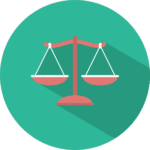
Pexels / Christina Morillo
Have you ever thought of using a customer data platform? If you’re thinking of starting, you’re in the right place.
I’m an expert in business-enhancing technology and knowing what a customer customer data platform is capable of and its benefits, which make it easier for you to engage and convert customers. You can read more about these tips and techniques on WPExperiments!
Let’s begin.
Contents
What Exactly is a Customer Data Platform?

Pexels / Pixabay
Businesses today collect high volumes of customer data daily to better understand their preferences, likes, and dislikes. Such data is collected to tailor fit services, offerings, and products to fit customers’ needs and provide a competitive edge over other businesses working in the same industry with similar offerings.
Definition
A customer data platform is a software that consolidates customer data from various sources into a single database and makes it accessible to other systems. Such data is then used to enhance the effectiveness of marketing campaigns, customer experience, and customer service that directly appeals to or addresses target market preferences.
Customer data is collected from different sources, including survey forms, online behavior, social media, and other channels. For example, a company might ask customers to fill out a form or take a survey and answer questions about their preferences and habits. Companies might ask customers to provide feedback by participating in social media promotions and competitions or offer rewards for providing reviews of products and services on their websites or other digital channels.
Then, using the information gathered, companies can customize their marketing strategies and product offerings and gain insight into customers’ shopping patterns, leading to better sales. Customers also benefit from keeping their data secure and anonymous to efficiently make repeat purchases without filling out billing forms.
History
Customer data platforms and customer data to enhance marketing to target the right people have always been crucial to growing or maintaining business profits. The realization that customer data beyond age, gender, and location was key to creating a successful customer experience sparked the emergence of the customer data platform.
The history of today’s customer data management platforms (DMPs), both of which are key marketing technology solutions. With that, customer data platform technology started to rise to support and streamline the use of such technology.
Here is a brief timeline of how customer data platforms have evolved into what they are today:
The 1990s-2000s
The market for customer data management is officially established via on-premise and specific solutions after the successful launch of CRM packages.
Salesforce launched the first subscription model for customer data management in 1999, rendering on-premise solutions obsolete. The Newly created API segment focused on cloud-based software hosting. Such solutions eliminated the need for internal support software or IT deployment, making them more cost-effective and sustainable business options.
2007
Software-as-a-service (SaaS) solutions gain popularity over ASPs because they provide on-demand customer data access. At this point, many customer database software solutions were designed specifically for vendor needs. Such hindrances made it difficult, if not impossible, for data to move from one place to another for optimal use in improving business performance.
To address this, vendors started to develop advanced integration tools (APIs) for customer databases, which are then converted to customer data platforms.
2013
David Raab officially coined the term customer data platform to describe software as a broader and centralized solution designed to work synonymously with other platforms to enhance customer relationships, acquisition, and engagement.
Customer Data Platforms Today
Since 2013, CDP providers have developed and improved their capabilities to include advanced AI and human learning capabilities. Also, this technology is now a standard for businesses requiring customer management. It doesn’t just cut operational costs and fast-tracks marketing, sales, and decision-making processes that allow a business to scale faster than ever.
Who needs to use it
Customer data platforms today have become necessary for any business, company, or organization regardless of size because of the increased competition and pressure for growth. Businesses using customer data platforms have seen a dramatic increase in the quality of their leads and customer acquisition.
Types of Customer Data Platform

Pexels / Lukas
The great thing about customer data platforms is that there are a handful of types to choose from and apply to your business based on your specific goals, targets, or uses. Know what options there are and which ones will best fit your needs.
Type #1: Data ingestion and integration
CDPs that focus on data ingestion and integration will automate collecting and organizing information for different sources, to create an organized and structured format that reduces potential errors and inconsistencies. These CDP types integrate easily with data sources and ingest them in batches. Since its main strength is fast data transfer to systems, it sometimes lacks the full ability to eliminate duplicate records or catch data inconsistencies.
While some companies apply the manual process to this task through internal IT or analytics teams or outsourced vendors, it’s not the most cost-effective or efficient method, especially with the high amount of data requiring processing on a daily basis. CDPs focused on data ingestion, and integration is best suited for businesses looking to automate data transfer and organization process to make it readily available faster for teams to use and access.
Type #2: Unification and identify resolution

Pexels / Pixabay
Unification and identity resolution-focused CDPs place everything into a customer’s record while eliminating duplicates for accurate and clean data. Moreover, a unified customer profile gives users a quick overview of a customer’s full activity across all channels and platforms. Unification combines records that match email, phone numbers, and other information.
Applying unification and identity CDPs is ideal for businesses with customer information and data aggregated and organized. With it, companies can create and enhance individual customer profiles towards a more targeted customer approach through a single customer view.
Type #3: Intelligence and analytics
Intelligence and analytics provide businesses with crucial information on customers’ past KPIs like age, gender, and location. Rather, it focuses on how customers behave on digital channels and platforms like websites and social media. Moreover, CDPs focused on intelligence and analytics also consider how certain data affect behaviors.
With such information, businesses can gain valuable insight into which strategies and approaches work best to convert leads to paying customers.
Type #4: Cross channel activation

Pexels / Christina Morillo
Activation-based CDPs connect all businesses’ engagement channels to enable omnichannel and automated marketing efforts. Cross-channel activation works for email, social media, websites, and other software tools to deliver KPIs and metrics. These key components optimize the value and effectiveness of campaigns and businesses’ efforts for consistent growth.
Uses of Customer Data Platform

Pexels / Jeshootscom
Customer data platforms have numerous benefits and applications for businesses, especially those looking to apply a digital transformation strategy to customer engagement and service. It goes beyond simply collecting data to understanding customers’ buying behavior and preferences, what they like, what they buy, and how they interact with brands. It is all about data and analytics to deliver relevant messages to specific customers.
The more customers you engage with your brand, the more revenue you will earn. The information you gather from customer data platforms helps you make marketing decisions based on accurate data.
Uses #1: Organized Customer Data Management (CDM)

Pexels / Lukas
Customer data management (CDM) maintains accurate, organized customer information and ensures it is available to all employees when strategizing customer relationship practices. Proper CDM also goes a long way in ensuring a business can find relevant information to help make better marketing decisions.
In line with that, a customer data platform enhances customer data management by allowing marketers to create and manage custom customer segments, view and analyze key metrics such as revenue, and develop detailed profiles of their customers. These insights are used to drive personalized marketing campaigns.
Uses #2: Accurate and Actionable customer analytics

Pexels / Jessica Lewis
The right customer data platform offers the purpose of data-driven marketing planning that ensures a company has the tools to measure, analyze, and optimize its marketing efforts. Customer data platforms allow a company to create a marketing plan built on relevant, accurate data. By using data-driven marketing planning, companies can build strategies aligned with their current needs and goals.
Uses #3: Allows data-driven decision making

Pexels / Rfstudio
Data-driven decision-making is a business term that means using data to make strategic decisions. Data-driven marketing allows companies to make the right decisions based on the results of their efforts.
It’s not just about having data, however; it’s also knowing what to do with it. It’s about taking action on those results. That allows marketers to experiment with different marketing messages or channels and adjust them as needed. Data-driven decision-making also identifies specific target groups, or micro markets, that businesses can use for future marketing initiatives.
Uses #4: Enhances customer affinity to a brand or business

Pexels / Christina Morillo
Applying a customer management platform is a way to build stronger bonds with current and potential customers. It is a marketing strategy that relies on the customers’ feelings toward the brand. When they are happy with the brand, they want to do more business with it.
Customers and potential customers like your business or brand feel more loyal and connected to it. This means they feel less inclined to leave it than if the affinity was low. When this happens, it is easier for people to buy from you. You may even find that your competitors’ sales numbers decrease when you have a strong customer base.
Data that Customer Data Platform Collects

Pexels / Fauxels
Its been established that CDPs collect customer data from various sources to organize them in a manner that makes it easier for marketers and businesses to make informed decisions. But what type of information does CDP target and why?
Type #1: Identity Data

Pexels / Christina Morillo
Identity data is the most common type collected by CDPs and includes basic information such as:
- Full name
- Age and gender
- Location
- Contact information (mobile, phone, email)
- Social information (Facebook, Twitter, Instagram, LinkedIn, etc.)
- Professional data (Job Title and company)
- Account information (should there be log-in details required)
The purpose of identity data is to ensure all customers interacting with a business do not get confused with others. Usually, such information is first-party data, and customers agree to provide knowledge that the company will own the information. It is the company’s responsibility to ensure the security and privacy of such data.
Type #2: Descriptive Data

Pexels / ThisIsEngineering
Descriptive data enhances identity data by adding more specific points like:
- Detailed professional information (including past employers and roles, your income, and industry)
- Lifestyle (vehicles, pets, magazine subscriptions, home size)
- Family (marital status, children, living arrangement)
- Recreation and hobbies (frequency of activities and interests)
Descriptive data collected will depend on the nature and type of business. For example, a realty company collects data regarding your current house size and the number of people living with you rather than information about whether you like to take camping trips during the summer. In general, companies will base descriptive data collection to meet the goal of engaging with customers based on their selling point.
Type #3: Quantitative or Behavioral Data

Pexels / Christina Morillo
Quantitative or behavioral data are specific manners in which customers interact and engage with an organization or business and include:
- Transaction information (purchases, cart behavior, returns, exchanges, refunds, and order dates)
- Online activity (website visits, click-through rates, offers viewed, time on webpages, and social media interactions)
- Customer service interactions (ticket date creation, conversation with representative, feedback, concerns, and queries asked)
- Email communication (number of times opened, time spent reading, links clicked, any responses)
With this data, businesses can measure the effectiveness of their marketing and customer support efforts and pinpoint any necessary improvements.
Type #4: Qualitative Data

Pexels / Negative Space
Quantitative data measures a customer’s affinity to a business. Usually, such data focuses on gathering thoughts, opinions, attitudes, and impressions. Some examples of qualitative data gathering points include:
- Opinion data (product or service ratings, service ratings)
- Introduction data (how a customer found a business, why they chose a specific offering, or why they prefer one thing over another)
- Affinity data (their opinions on particular business aspects such as website user experience and thoughts on social media posts)
Customer Data Platform vs. Customer Relation Management vs. Data Management Platform

Pexels / Cowomen
The main difference between a customer data platform (CDP), customer relationship management (CRM), and a data management platform (DMP) is the type and manner of information gathered. While all three store and organize customer information for quick viewing, the kind of information and its use differ greatly.
To break it down, a CDP works with known individuals in a business to create unified profiles automatically using identifiable first-party data. The data CDPs gather comes from multiple online or offline platforms and tools. Compared to a CRM, which only tracks direct customer interactions and requires a manual entry for it to be effective. Regarding DMPs, which use third-party data, information gathered is unidentifiable, like cookies and IP addresses.
Benefits of a Customer Data Platform

Pexels / Christina Morillo
Properly applying information a customer data platform gathers has many benefits for businesses. Right off the bat, CDPs enhance customer insights and build a personalized experience for them. Such benefits drive customer engagement and improve customer lifetime value and retention.
Benefits #1: Reduce data silos

Pexels / Pixabay
A customer data platform allows the company to combine disparate customer behavior and information and connect them more efficiently and effectively. The CDP may have collected the information stored in a CRM from multiple sources, such as marketing automation systems, online portals, call centers, and customer service representatives.
A single customer>data silos through audience segmentation lets you learn more about your target market and how you can connect with them better.
Benefits #2: Optimize campaigns, services, and digital efforts

Pexels / Christina Morillo
By connecting the dots across your organization, a customer data platform can help marketers understand the effectiveness of your existing campaigns, allowing you to target customers better.
For instance, when customers purchase an item on your site, sales representatives can contact them about a special offer on an upcoming product or service. This allows your business to capitalize on customer preferences while providing an exceptional customer experience.
The platform can also help you to increase your customer interaction by identifying which customers are likely to abandon your products or services. You can send personalized emails and messages that will encourage them to stay with you.
Benefits #3: Effectively apply customer journey practices

Pexels / Startup Stock Photos
Customer journey practices refer to the stages a customer goes through to make a purchase decision. These stages include awareness, interest, consideration, evaluation, decision, action, and retention. Businesses must consider every step if they want to achieve customer success.
A customer data platform will allow you to capture actions throughout the journey and aggregate them into a customer profile, enabling you to understand better the individual customer and what drives their buying decisions. The marketing team can then use the information to improve customer experience and make recommendations to customers based on buying behavior and preferences.
Benefits #4: Uncover new customer segments

Pexels / Vlada Karpovich
Customer segmentation is a strategy used to identify groups of customers based on common characteristics. You can use segmentation to divide your customers into groups based on their buying habits, demographics, interests, behaviors, and preferences. Once you segment your customers, you can create different communications tailored to each segment.
You will be able to provide a superior experience for each group.
Benefit #5: Improve overall profit margins

Pexels / Pixabay
Adding up all the above benefits can significantly improve your company’s profits. The better you can target the right customers, the better you will be able to sell your products and services.
Additionally, the right customer data platform generates more leads and personalized strategies that convert. Customers feel valued, understood, and heard in dealing with your company, which cycles back to an increased profit margin.
How To Choose the Best Customer Data Platform For Your Company

Pexels / Vlad Bagacian
When selecting a customer data platform for your company, you must look for a solution that matches your business needs. Data can help you to build a better relationship with your customers. A successful relationship with your customers makes it possible for you to offer them high-quality products and services, which leads to more sales.
Tip #1: Know what the CDP will be used for.

Pexels / Mikael Blomkvist
Before deciding which customer data platform to use, consider your business needs regarding information and data. You need to consider your needs regarding what kind of data you will need to store and how you will use that data. Once you know your needs, it will be easier to decide which data management system will suit them.
Tip #2: Understand the platform.

Pexels / William Fortunato
As you decide on what data you need, ensure you understand the customer data platform you will use. This can help you to determine if you need a one-time data solution or a long-term solution. You may also consider whether you need a cloud-based solution, an on-premise solution, or both.
You should be aware of the different platforms’ strengths and weaknesses and their focus on the type of data collected and how it’s organized.
Tip #3: Compare vendors and determine your ROI.

Pexels / Liza Summer
Once you know what you need in a data management system, you should compare various vendors. Learn more about the vendor’s capabilities, services, and price. Once you have decided, you should evaluate your current data management platform or method to determine if it meets your needs.
It is important to keep your current platform/solution for reference to compare better the new data platform and the one you are currently using. Additionally, consider factors like ease of deployment, performance, scalability, and support.
Frequently Asked Questions

Pexels / Pavel Danilyuk
Customer data platforms offer a streamlined and insightful experience for businesses looking to enhance customer management and relationships. While it is a straightforward solution, people have common questions about CDPs.
Are the customer data platforms replacing customer data management?
No, CDPs and CDM collect different types of data and use collected data differently, and work in tandem rather than through replacement. CDPs are first-party data and identifiable information aggregated from multiple sources into one location. CDMs are third-party data collectors using unidentifiable or anonymous information.
However, the ultimate goal is to provide businesses with an organized overview of customer information to enhance customer management and services.
Can customer data platforms accept data from offline and online sources?
Yes, customer data platforms can aggregate and collect data from both online and offline sources. Additionally, it can combine such data into a single-view profile for each customer to eliminate the need for guessing, saving marketers and sales teams time in finding essential contact information or data.
Is it safe to use customer data platforms on any business?
Yes, customer CRM, Web analytics, mobile applications, social media, and more.
The offline data collection sources include RFID tags, paper forms, kiosks, self-service terminals, and more. Some of these methods may not work, depending on what the business wants to collect.
What makes customer data platforms different from other systems?
Compared to CRM and CDM systems, CDP systems aggregate and organize data and provide in-depth analytics and reports that businesses can use to optimize their marketing and sales efforts for better ROIs.
In the past, marketing departments and sales teams were separate and had no way of knowing what was happening on the other side. However, CDP gives you the insight you need to improve your business.
More Interesting Articles To Explore
Customer data platforms contribute to business success in the digital age. Read related articles for more insight on what other elements directly benefit businesses.
- Find out how these types of errors in A/B testing can adversely impact your business and how to resolve them as soon as possible.
- Discover exactly what does USP stand for and why your business needs to meet sales goals.
- Virtual events are the next step in customer engagement, so knowing the basics can jumpstart your ideas and help you plan accordingly.








